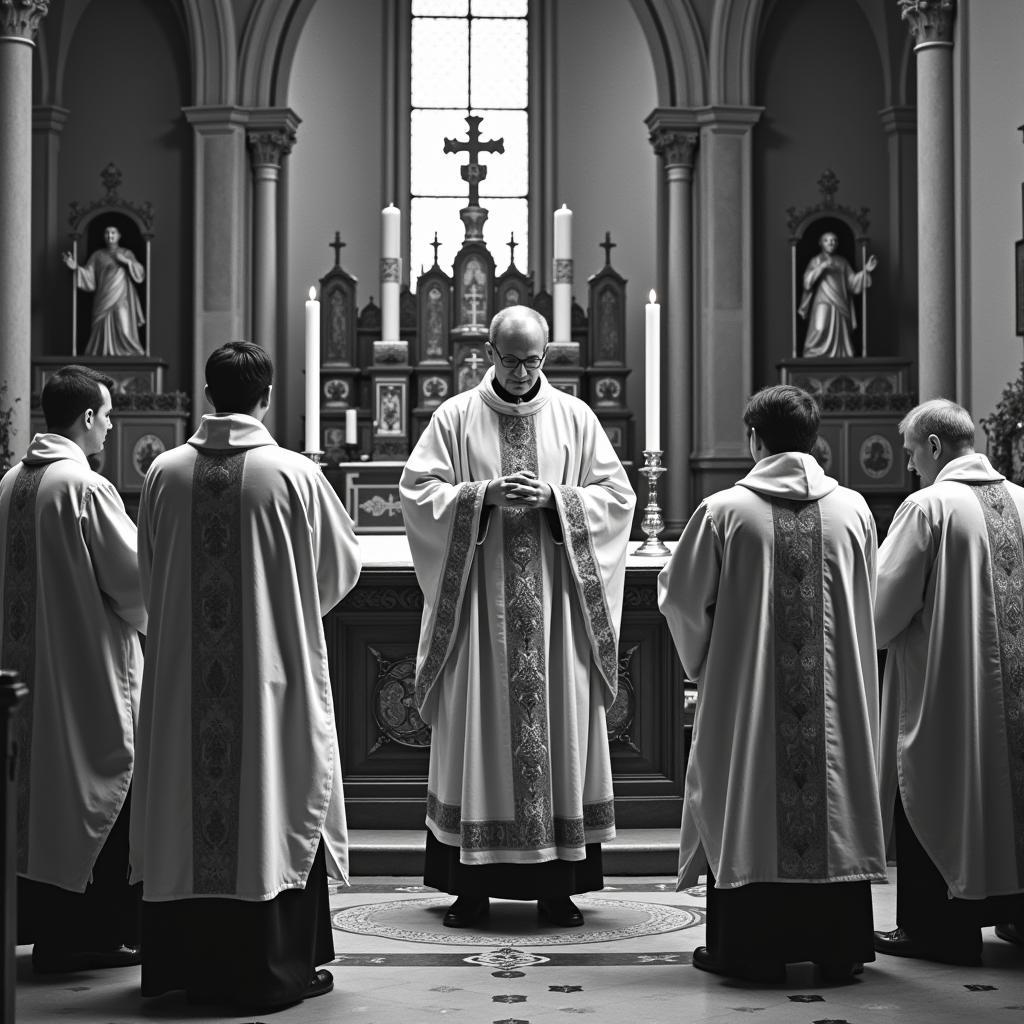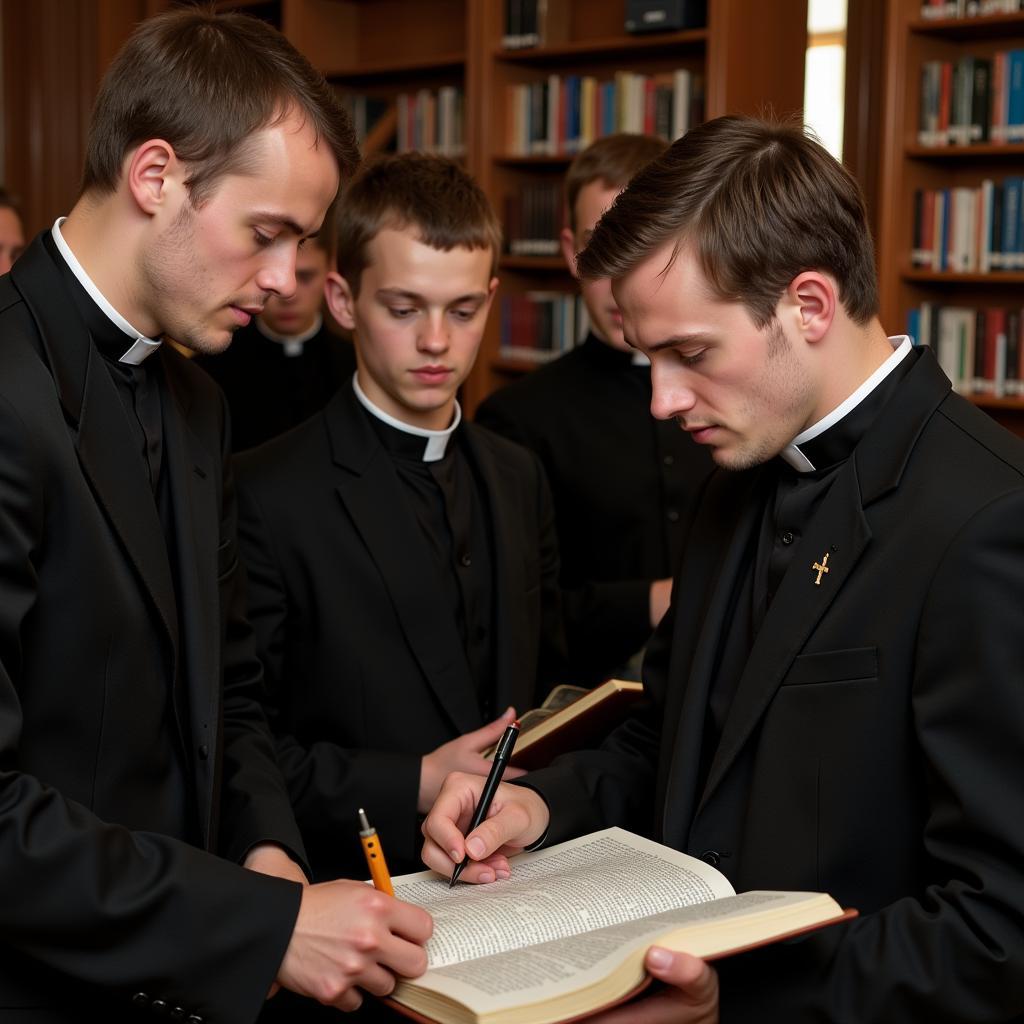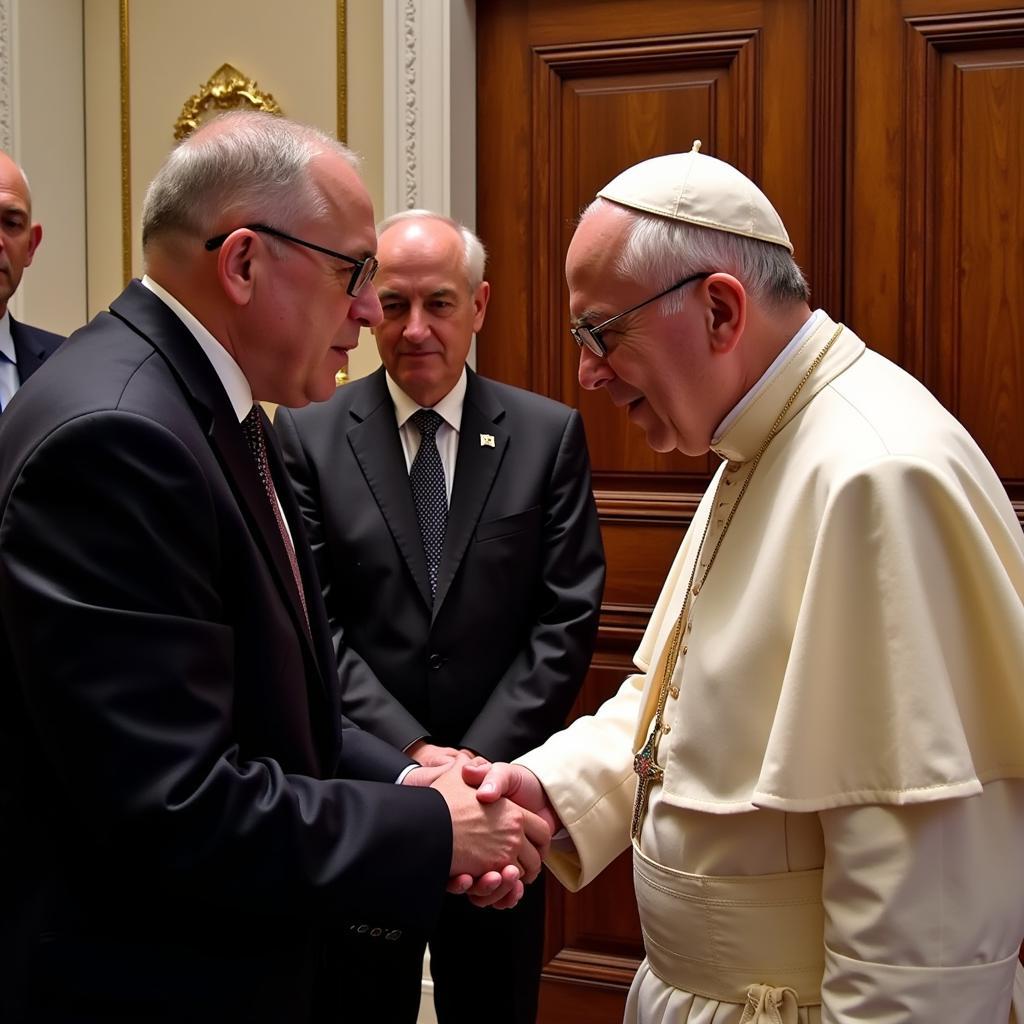The Society of St. Pius V (SSPV) is a traditionalist Catholic organization founded in 1970 by Archbishop Marcel Lefebvre. Known for its staunch opposition to the reforms of the Second Vatican Council (Vatican II), the SSPV has often found itself at odds with the Vatican. This article delves into the history, beliefs, and controversies surrounding the Society of St. Pius V, providing a nuanced perspective on this complex and often misunderstood religious group.
 Traditional Latin Mass celebrated by SSPV priests
Traditional Latin Mass celebrated by SSPV priests
The Genesis of Dissent: Vatican II and Its Aftermath
To comprehend the motivations behind the SSPV’s formation, it’s crucial to understand the seismic shift within the Catholic Church brought about by Vatican II (1962-1965). This ecumenical council introduced sweeping changes, aiming to modernize the Church and foster dialogue with other faiths. Vatican II led to revisions in liturgy, with the Mass, once said in Latin, now celebrated in vernacular languages. The council also emphasized interfaith dialogue and a less hierarchical Church structure.
Archbishop Lefebvre, however, viewed these reforms as a dangerous departure from Catholic tradition. He believed they diluted the faith and veered towards doctrinal relativism. This fundamental disagreement with the direction of the Church post-Vatican II led Lefebvre to establish the SSPV in 1970.
Traditionalism: The Cornerstone of SSPV Beliefs
At the heart of the SSPV’s doctrine lies a steadfast adherence to Catholic tradition, particularly as it existed before Vatican II. The Society rejects what it considers modernist interpretations of the faith, clinging to the Tridentine Mass (Traditional Latin Mass), pre-conciliar liturgical practices, and a more conservative theological outlook.
 SSPV seminary with students in cassocks
SSPV seminary with students in cassocks
Contentious Issues: Where SSPV Diverges from Rome
The relationship between the SSPV and the Vatican has been fraught with tension. The Society’s stance on several key issues has led to its current status as being in an irregular canonical situation, meaning it lacks official recognition from the Catholic Church.
- Liturgy: The SSPV exclusively celebrates the Tridentine Mass, considering the post-Vatican II liturgy flawed.
- Ecumenism: While the Catholic Church encourages dialogue with other Christian denominations, the SSPV maintains a more exclusivist view, holding that Catholicism is the one true Church.
- Religious Freedom: The SSPV’s interpretation of religious freedom differs from the Vatican’s, particularly concerning the freedom of other religions to proselytize.
Excommunication and Reconciliation Efforts
In 1988, Archbishop Lefebvre consecrated four bishops without papal mandate, an act considered illicit by the Vatican and resulting in his excommunication, along with the bishops he consecrated. Since then, there have been ongoing attempts at reconciliation between the SSPV and Rome.
 Meeting between SSPV representatives and Pope Benedict XVI
Meeting between SSPV representatives and Pope Benedict XVI
Pope Benedict XVI lifted the excommunications on the four bishops in 2009, and discussions continue to this day in hopes of finding a pathway to full communion. However, significant doctrinal differences remain, making the future relationship between the SSPV and the Vatican uncertain.
The Society of St. Pius V: A Complex Legacy
The Society of St. Pius V represents a distinct thread within the tapestry of Catholicism, one marked by unwavering traditionalism and a complex relationship with the Church hierarchy. While controversies persist, understanding the SSPV’s history, beliefs, and motivations is essential for fostering respectful dialogue and navigating the nuances of faith in an increasingly polarized world.